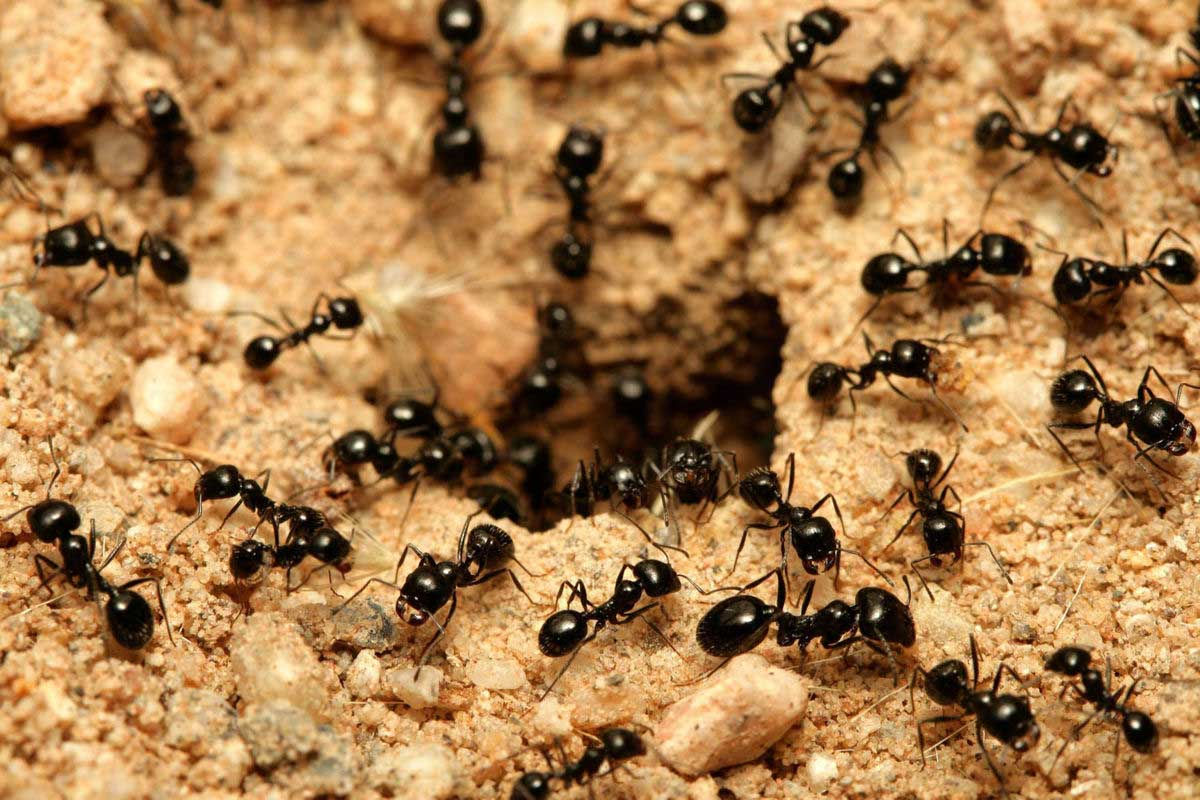
Control of ants that have become a pest
Our Technicians have access to ant prevention and eradication products that are far more effective than repellent pyrethroids. Fipronil and indoxacarb are non-repellent ingredients that will effectively control ants by taking advantage of their social interaction. Individuals will inadvertently spread the pesticides to the whole colony and even species with multiple nests can be eradicated.
Why are they considered to be pests?
Ants are potential though perhaps unlikely transmitters of disease and they can be annoying and destructive pests. Their nest mounds can be unsightly and undermining of paving and plant roots is common. Excavation under concrete or foundations can cause cracking. Fires are sometimes caused by ants nesting behind electrical switches. Bites and stings can be very painful and a serious risk to the health of sensitive individuals.
More often though, ants are just an unwelcome nuisance in and around our homes.
What can home owners do to control them?
Ants are one of, if not the, most difficult pest to control. Their biology and subterranean existence equips them superbly well for survival. None of the favored old remedies such as boiling water or petrol will be effective. Depending on the species there are likely to be less than 5% of the colony above ground at any time and it is for this reason that commonly used repellent pesticides are only temporarily effective. Most of the colony will remain safely underground and relocate or just resurface a few weeks after the treatment.
Maintaining sanitation and hygiene in and around the home will deter ants. Clean up uneaten pet food outside and food particles inside the home. Pay particular attention to kitchen food preparation benches and floors and any other areas that may become contaminated with crumbs etc.
ANTS

TERMITES | ANTS | COCKROACHES | FLEAS MOSQUITOES | RATS & MICE | SILVERFISH | SPIDERS
ANT FACTS
Ants belong to the order Hymenoptera (membrane wing) along with bees and wasps. They are a widespread and varied group of insects; in Australia around 3000 species are known. They are generally omnivorous but feeding habits vary between species. Some are predacious while others only scavenge. All ants are liquid feeders.
Ants are social insects living in colonies of thousands to millions of individuals. They nest in soil, rotting wood or even among rocks. However nesting sites need not be permanent as ants will relocate their nests if conditions become adverse. Some will nest inside buildings in wall voids or any suitable cavities such as behind cupboards and skirting boards. More often they are temporary if not infrequent intruders into our homes, seeking food, moisture or shelter.


